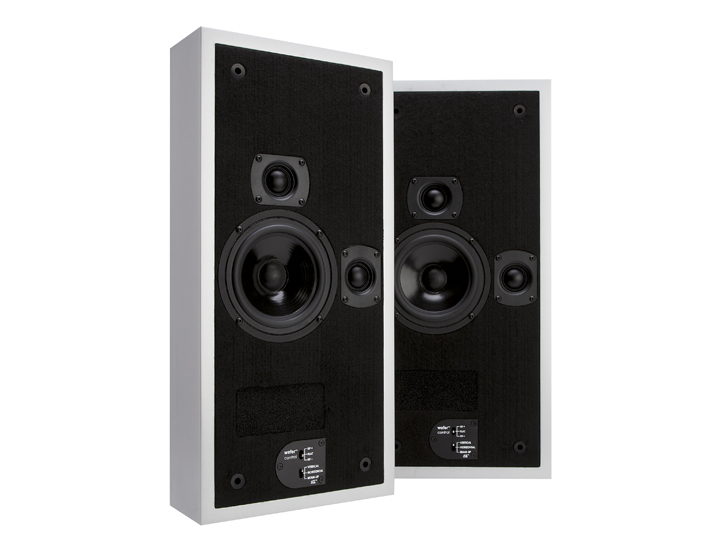TechRadar Verdict
A wonderfully discreet hang-on-the-wall speaker, but the Wafer 1’s performance falls well short of its larger Wafer 2 brother, lacking the latter’s smoothness and neutrality. It still sounds bigger than you might expect.
Pros
- +
Discreet design
- +
Bigger sound than you might expect
- +
Decent bass
Cons
- -
Sound lacks smoothness
Why you can trust TechRadar
Founded as recently as 1990, PMC is one of the few speaker companies to enjoy equal success in both domestic hi-fi and professional audio circles. A core strategy has been devised to ensure that there's plenty of time to develop each model individually, as well as keeping models in the portfolio for many years.
Eighteen months ago, we reviewed PMC's Wafer 2, a super slim hang-on-the-wall speaker that's designed to fit very discreetly into any room, taking up no more space than a flat panel TV. Though largely successful in performance and sound quality, it's also a quite an expensive prospect at £1,650 per pair, so we were keen to discover whether the somewhat smaller Wafer 1 could perform a similar trick at £1,100 per pair.
Size of enclosure and main driver apart, the two models look virtually identical - indeed it's difficult to say which is which unless they're placed side by side. Finished in white, grey or black, the Wafer 1 comes with brackets for fixing onto a solid wall, so that it stands proud by a modest 10cms, and an oversize grille helps disguise the box behind. An '-iw' variation is also available, for flush mounting by being recessed into a stud-type wall.
The Wafer 1 still incorporates PMC's trademark transmission-line bass loading (here in an H-pattern twin-line arrangement) with the port exit naturally on the front. Unusually, it also incorporates two tweeters, switchable either or both, so it can be mounted either horizontally or vertically (The 'both' position 'steers' the treble, so the speakers can be mounted well above or below normal ear-line, eg for centre channel duties.) Three positions of relative treble output (typically +1.5, 0, -1.5dB) are also available.
The 140mm main driver has a 93mm diameter paper cone, while the tweeters use 27mm fabric dome diaphragms. A specially absorbent 'stealth baffle' front reduces secondary radiation from the surface next to the drivers. Bare wire or spade connection is made via a single terminal pair - there's isn't enough room between the speaker and the wall to accommodate 4mm plugs.
Sound quality
Naturally the Wafer 1 was mounted on the end wall of the listening room using the supplied brackets - a relatively easy operation in practice, with the assistance of the supplied jigs. And there's no denying the effectiveness of its 'disappearing act' - although not exactly invisible, it's visually very easily overlooked.
On the plus side, the Wafer 1 does sound significantly bigger than one expects, though voices sound quite thick and chesty, even though they're notably coherent and articulate.
Although essentially free from boxiness, there's an obvious lack of low bass, while the mid-bass has slightly odd tonality.
Bass lines are quite clear and explicit, but with a definite thickening of upper bass textures. This emphasis is both unusual and audible, though it's arguably no more 'wrong' than the
lack of output, which is prevalent elsewhere.
One interesting consequence of the hang-on-the-wall mounting is that the relative amount of ambient 'in-the-room' reflected sound is to a certain extent reduced. Depth perspectives also seem somewhat reduced, probably because of the close wall proximity.
The TechRadar hive mind. The Megazord. The Voltron. When our powers combine, we become 'TECHRADAR STAFF'. You'll usually see this author name when the entire team has collaborated on a project or an article, whether that's a run-down ranking of our favorite Marvel films, or a round-up of all the coolest things we've collectively seen at annual tech shows like CES and MWC. We are one.
